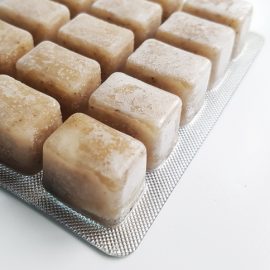Difference between TDS Pen & Inline TDS Meter
Measuring TDS in Saltwater Aquariums
Please note that this article may contain affiliate links which means that I may earn a small commission on any product you purchase through this site. It helps keep the site running and will not cost you any extra.
When a beginner starts getting serious about keeping a reef tank one of the first things they will consider is how to make the hobby cost effective. After all the more money you can save on the basics, the more money you have to spend on amazing fish and coral.
The use of RODI water is essential from the very start, normally purchased from your LFS. However when you start running your own you suddenly have a little more spending money in your pocket and you become a little less reliant on others.
An essential tool in maintaining good quality RODI water is the use of either an Inline TDS Meter or a Handheld TDS Tester. These meters will tell you when your filters need changing to maintain the water conditions required in a saltwater tank.
A good guide for TDS is to ensure it rises no more than 3ppm.
Using a Handheld TDS Tester
The cheaper of the two options is the Handheld TDS Tester which I used for years. These are simple enough to use providing the measurement of both temperature and TDS.
Benefits of the Handheld TDS Meter
Unlike an Inline TDS Meter, you can take the handheld meter with you. This may be to check the TDS of your LFS water, or to check water you may have run into a water container.
The Handheld TDS meter also includes a temperature reading.
The third button is a HOLD button, which I have found handy when inserting the meter into the top of a 25L water container. Doing so obscures the display, but pressing the HOLD button will keep the reading on the display until you release it.
Using An Inline TDS Meter
An Inline TDS Meter is also a battery operated device with an on/off press button.
The display box is about the size of the palm of your hand and will come with double-sided tape to secure it near or on your RO unit.
There are two sensors that feed from the display. These sensors are plugged into included T sections, which in turn require that you cut through your inlet and outlet tubes to connect the T sections.
The toggle swith beneath the display gives you the option off either veiwing the inlet TDS or the outlet TDS.
Benefits of an inline TDS Meter
- Constantly connected, you will get an absolute true reading of the TDS as the water passes through.
- A simple press of the button and you can check your TDS output – no need to ferret out your handheld TDS Meter.
- An added bonus is the real time display gives you more of an understanding of the filtering. For instance, in the first 20 to 30 seconds my output is 3 – 4ppm before filtering out at 0ppm.
- The unit automatically switches off saving battery power.
Conclusion
Both the Handheld and the Inline Meter are useful, however if you could only choose one or the other I would recommend the Inline TDS Meter for it’s convenience of always being where you need it (I tend to mislay things), and for it’s real time TDS readings.





